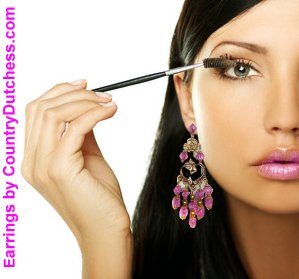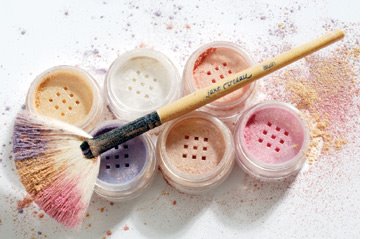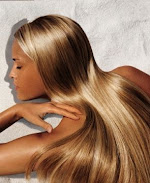Research shows that stress can age your skin almost as rapidly as sun exposure. A new cache of skin care ingredients promise relief – but do they work? Here’s what you need to know.
 In the not so distant past, experts believed that the simple act of frowning was largely responsible for those wrinkles and furrows in your brow.
In the not so distant past, experts believed that the simple act of frowning was largely responsible for those wrinkles and furrows in your brow.Today doctors know that it’s not just the act of frowning that makes you look older – it’s also the reason behind the frown that can make a difference in how you look.
I’m talking about links between stress and skin aging – a relatively new idea but one that both doctors and skin care companies are continuing to embrace. .
While experts aren’t exactly sure how or why stress ages skin, many believe that hormones produced when stress is chronic - such as cortisol – cause a disruption in immune function that impacts the cells that normally protect skin from harm – activity that mimics the aging process in terms of damage.
“Stress hormones can cause irritation and loss of immune function in skin, which is very similar to what happens during the aging process,” says Dr. Tom Mammone, executive director of research and development for Clinique.
When skin becomes irritated in this way, Mammone says it causes a break in the natural protective barrier that keeps moisture in and external aggressors, such as pollutants, out.
“When the barrier is damaged, moisture evaporates more rapidly, irritants get in more easily, and both can cause more [aging] damage to the skin,” says Mammone.
Now if you’re thinking it’s purely psychological stress that can take its toll on your skin cells, guess again. In one now classic study published in the Journal of Investigative Dermatology doctors from Weill Medical College in New York City found that even a physiological stress as common as sleep deprivation can disrupt the skin barrier, causing alterations in the immune function that normally protects skin.
Certainly, a few sleepless nights or an occasional bout of worrying isn’t going to do you much harm. But when stress is chronic, or sleep deprivation ongoing, when your diet is deficient and you don’t get the nutrients you need to run at full speed, you not only endanger your health, but science now says you can end up looking far older than your years.
So what’s the solution? One option is a new breed of skin care ingredients designed to fight the signs of aging by helping to boost the immune function of skin cells. Among those creating the loudest buzz right now: Sea algae - one of the hottest new trends in anti-aging stressed-skin care.
Calming Your Stressed Skin: What To Do
While any good moisturizer can replenish some of the fluids lost when skin is stressed, the latest science shows that various forms of sea algae may also hold restorative properties - powers that go above and beyond simply increasing moisture levels.
Indeed these ingredients harnessed from under the sea are believed to specifically combat skin stress, and in doing so repair the barrier that helps protect cells from the outside in.
According to Mammone, among the most effective is a form of algae grown off the coast of Israel, in the Mediterranean Sea. Known as Red Microalgae Extract, it is harvested, cultured in a lab and then the protective elements are isolated and used as a skin care ingredient.
”This works to help counteract the negative visible effects of stress,” he says.
Blue green algae is a similar compound known for its high antioxidant properties and skin relief activity. Often it is combined with other skin-healthy ingredients such as grape seed oil to enhance its protective powers even more.
Padina Povonica is still another marine botanical good for stressed skin. It works to help cells absorb calcium, which in turn contributes to a stronger protective barrier – one that is better able to resist external skin stressors like pollution.
Among the products featuring some or all of these ingredients include Kiehl’s Cryste Marine Firming Cream, GM Collin H50 Therapy Cream, H20+ Moisture Defense Protector, and Aubrey Organics Blue Green Algae with Grape Seed Extract line of products.
Fortunately, there are also less costly ways to counter the effects of stress on your skin. Here are four things research shows are proven to help.
1. Reduce stress on your skin by reducing stress in your life. Sounds easier than it is, I know. But if you can manage even a short bout of relaxing activity during the day – 10 minutes of yoga, 20 minutes of gardening, 15 minutes soaking in a hot tub – studies show it can calm your frazzled nerves and reduce production of stress hormones. You’ll not only feel better, you’ll look better – and younger!
3. Get more sleep. This is particularly important if you’re over 45. Why? As we age, our entire body, including our skin, needs a little extra sack time to undergo the natural repair processes that counteract cell damage we experience during the day. If, no matter how you try, you can’t log in more than 6 hours a night, try napping in the evening. You could wake up looking younger!






























 The Claims: Also known as the Masai Barefoot Technology, these shoes utilize a signature “rolling sole” to mimic walking on uneven terrain. (Think of a sneaker where the toes and heels are both curved upwards). The goal is to trick your feet into believing you are hiking through the woods, making neglected muscles work harder to maintain balance and absorb the shock of an uneven terrain, while all the while reducing impact on hip and knee joints.
The Claims: Also known as the Masai Barefoot Technology, these shoes utilize a signature “rolling sole” to mimic walking on uneven terrain. (Think of a sneaker where the toes and heels are both curved upwards). The goal is to trick your feet into believing you are hiking through the woods, making neglected muscles work harder to maintain balance and absorb the shock of an uneven terrain, while all the while reducing impact on hip and knee joints. The Claims: Relief from pain caused by ill fitting shoes combined with a fat burning effect equal to climbing stairs are just two of the claims made by these shoes which feature an extreme “rocker sole” (think hard metal rock band shoes). They work by changing the center of gravity of your foot when you walk, which the company says can also trim and tone legs, hips, abs, buttocks and love handles, reduce the pain of plantar fasciitis, improve posture and back pain, improve circulation and burn calories. Available as thong type sandals, croc type clogs or space boots.
The Claims: Relief from pain caused by ill fitting shoes combined with a fat burning effect equal to climbing stairs are just two of the claims made by these shoes which feature an extreme “rocker sole” (think hard metal rock band shoes). They work by changing the center of gravity of your foot when you walk, which the company says can also trim and tone legs, hips, abs, buttocks and love handles, reduce the pain of plantar fasciitis, improve posture and back pain, improve circulation and burn calories. Available as thong type sandals, croc type clogs or space boots.














